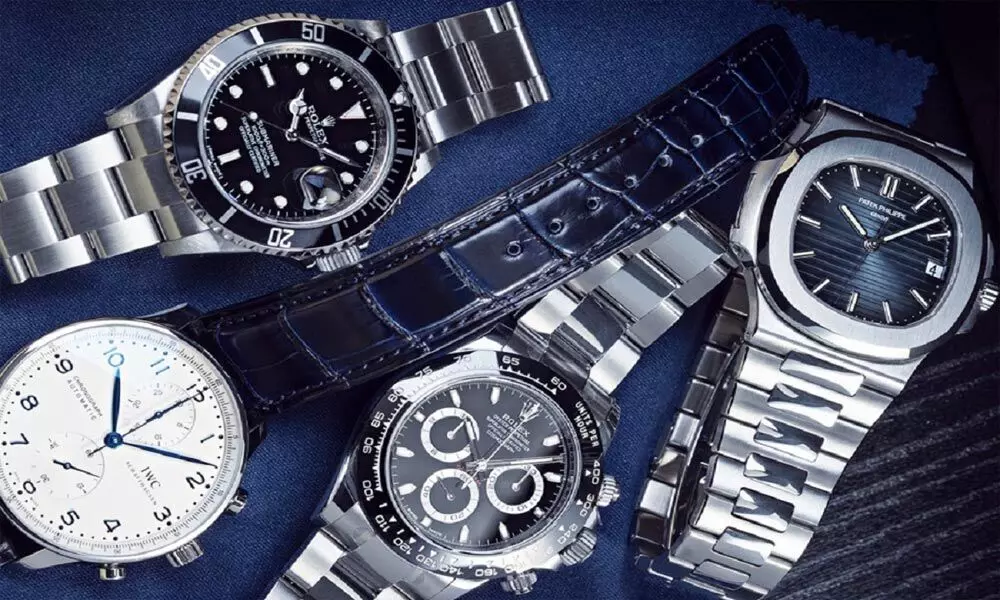Luxury watch segment gaining traction in India
Revenue in the luxury watches segment in India amounts to $535m in 2022. The market is expected to grow annually by 0.33% (CAGR 2022-2027)
image for illustrative purpose

Luxury is no longer restricted to developed countries, but is also gaining popularity in developing countries of Asia-Pacific. In India, watches are considered a part of fashion accessories and, thus, consumers are shifting from classical watches to luxury brands with innovation and unique design. Furthermore, India is a lucrative market for various luxury brands, owing to the presence of royal heritage and the availability of technological assets.
The global luxury watch market reached a value of $26.3 billion in 2021. Looking forward, IMARC Group expects the market to reach $32.3 Billion by 2027, exhibiting a CAGR of 3.4 per cent during 2022-2027. Keeping in mind the uncertainties of Covid-19, we are continuously tracking and evaluating the direct as well as the indirect influence of the pandemic.
Luxury watches are high-quality and premium-priced accessories manufactured by skilled craftsmen. They are made using precious metals, such as gold, silver, and platinum, and ornamented with jewels like rubies and diamonds. They are worn on the wrist to add a sophisticated and elegant look to people's style and personality. As they are exclusive, expensive, and not mass-produced, they can easily be differentiated from their affordable counterparts on account of their durability and uniqueness. At present, improving living standards and inflating disposable incomes are driving the demand for luxury watches around the world.
Brands that were built in the past and had a strong run are still considered marketable by today's standards. Rolex is continuing its strong brand concept to continue attracting millions of customers. Some of the major brands offering luxury watches in India include Rolex, Omega, Rado, and Tissot, and due to the increasing demand, other companies have identified the potential and invested in expanding their product portfolio to strengthen the position in the market.
Healthy lifestyle adoption and the preference for staying fit has increased consumer indulgence in various sports activities. In line with the athleisure trend, consumers are increasingly seeking for various varieties in the sports wearable segment, thereby, accelerating the smartwatch sales.
The luxury goods segment in India has seen tremendous growth in recent years, with several international luxury brands entering the Indian market. Luxury goods are a niche market segment, where in the consumers desire exclusivity and are willing to pay heavily for it. Thus, luxury brands are priced at a premium, to maintain their exclusivity. Obviously, the more unique and exclusive a luxury brand is, the higher its expected brand premium. The present study uses dummy variable regression to estimate the premia associated with luxury watch brands and product features. The results of the study indicate statistically significant brand premia, using which the brands can be grouped into distinct segments, and statistically significant product feature premia, including for gold-plated casing and titanium and ceramic straps, and for several special functional features such as world time and chronograph. The results of the study support the exclusivity hypothesis, that the exclusivity of luxury brands is the fundamental basis for luxury brand premium, through greater diversity of product variants in higher price range, using unique casing and strap materials and innovative functional features. This reflects the strategy of premiumisation of pricing of luxury watches, with greater emphasis on value-add features and complexity (total number of complications and moving parts). By product type, the quartz segment holds the maximum share, however, the smart watch segment was the fastest growing segment, mostly followed by an increasing demand coming from fitness sports and health-conscious consumers. On the other hand, the lower priced and mid-priced watches are increasingly gaining market traction, due to an increasing demand for value-for-product watches and accessories among women. By distribution channel, the offline retail channel holds a major share and under the offline retail channel segment, specialty stores accounted for the prominent share and it turned out to be the largest segment as well. Furthermore, Mono-brand specialty stores are gaining popularity across the country, which for instance, a significant number of the chain stores of Titan are operated through 'World of Titan' outlet franchises.
Revenue in the luxury watches segment in India amounts to $535m in 2022. The market is expected to grow annually by 0.33 per cent (CAGR 2022-2027). In global comparison, most revenue is generated in China ($10,908m in 2022). In relation to total population figures, per person revenues of $0.38 are generated in 2022.

